Unlock Your Entrepreneurial Potential with Business Financing
A Guide to Business Financing Essentials

Starting any new business venture is an exciting time; however, it can also be a one filled with obstacles — especially when you need to get the right financial backing. Knowing the essentials of business financing is essential for creating a robust ground to launch your project off the right way. This guide will walk you through a number of business finance options that can serve as inspiration for you, the entrepreneur or would-be entrepreneur, to ensure that there is something out here for nearly everyone and get your business off ground even in today's competitive market.
Whether you are a construction business looking to raise capital or medical practice optimizing your cash flow these findings will empower and underpin the robustness of decisions in pushing forward with your business aspirations. So stick with us as we break down how you can avoid these pitfalls and set yourself up for long-term growth and success in business.
Exploring Business Financing Basics
Understanding Financial Fundamentals
The lesson learn here is that all entrepreneur must know the basic of financial to start there business journey. It starts with understanding what revenue, expenses and profits are. Revenue is the monies an entity receives during its normal business operations. On the other hand expenses mean money which is expended in order to generate revenue. However, what is defined as profit simply equals revenue minus cost. Knowing these building blocks will help you judge your business' financial health.
Also, learning how to read balance sheets, income statement and cash flow statements goes a long way.
A balance sheet is a report that summarizes all of an entity's assets, liabilities, and equity as of a given point in time. On the other hand, an income statement provides you with how profitable your company was in a certain timeframe. Cash flow statements, however, are concerned with tracking the movement of all cash going into and out from your business — it focus on liquidity.
Knowing these financial building blocks will help you to make informed decisions, anticipate obstacles and take advantage of opportunities that are presented.
Starting Your Financial Journey
When it comes to financial literacy, getting started is a strategic move. To start on the right foot, establish financial roadmap objectives geared toward your business goals. Whether you are trying to increase your revenue by a particular percentage or bring down your operational costs, specific goals make for better direction. Then have the full budget! This budget needs to lay down a framework of your incomes and expenditures that enables you to manage your resources better.
Start to determine what you will need for funding early on. Do you need cash for startup, working capital or expansion? This will help to determine appropriate funding sources. Look into creating partnerships with financial institutions and advisors who are able to provide specialized advice that suits your business requirements.
Procure every receipt and keep meticulous financial records right from the inception of your business. This process helps keep a tab on the performance and establishes credibility in front of prospective investors. Always keep in mind that, financial management is a ongoing process. Adjust them as you go to meet changing business requirements.

Top Financing Options for Small Businesses
Grants and Business Loans Overview
There are two main options that small businesses have for financing their costs: grants and loans. Grants are money made available by government agencies, non-profits or private organisations which do not have to be paid back. They are typically competitions, with eligibility and reporting requirements. Best for: Grants are a great way to get funding streams connected to your business, especially if it is in the realm of research or innovation community development.
Loans, on the other hand, are borrowing money that will need to be repaid with an interest rate over a specific time frame. They are offered by banks, credit unions and online lenders. Loans are either secured, requiring collateral that backs the loan or more simply unsecured based on your credit. They carry their own advantages and disadvantages; hence it is important to make a selection in accordance with your business requirements and the status of your financial health.
You get to the best funding sources for your business when you see and understand what distinguishes between grants from loans. Knowing options helps you make money-smart choices — whether that means free cash or flexible repayment.

The Pros and Cons of Secured Loans vs. Unsecured Loans
Benefits of Secured Loans
There are many advantages to secured loans that may be of utmost importance for small businesses. One of the main advantages is that it has lower interest rates than unsecured loans. Since secured loans are collateralized, (real estate or equipment/ inventory) it represents less risk for a lender. This lower risk generally leads to better loan conditions such as a decreased interest rate or the facility of accessing expanded credit.
Secured loans also may be more readily available to businesses with lower credit scores. It offers the lender security through collateral, and that can make your chances of being approved much higher if you credit history is a little bit tarnished. This makes secured loans one of the best business loan options for new businesses or those rebuilding their credit.
Secured loans come with extended payment plans to ensure affordable monthly payments. This can increase cash flow and in-turn allow some of the financial flexibility to invest in growth. If a secured loan is used, it can help businesses to secure vital funds at reduced rates and more advantageous terms.

Risks of Unsecured Loans
While unsecured loans require no collateral, they carry their own risks. With the interest rates growing, one of the most important risks; These loans aren't secured, meaning that lenders face more risk and can therefore charge higher interest rates. Such fees could drive up the charge of borrowing for your business.commonly raising overall costs.
Another danger relates to the more stringent qualification. Rather, they will require a stronger credit history and higher scores to approve your unsecured loans. Which is an impediment for start-ups or businesses with less than perfect credit. And in general, unsecured loans will have lower borrowing limits compared to secured loans which can limit how much money your business is eligible for.
Unsecured loans also typically have shorter repayment terms so you may end up with a higher monthly payment. Paying such high premiums every month can put a massive strain on your cash flow, it makes the business operating and managing operations renovation hard. Having knowledge about these risks is essential for you to decide on financing that suits your business.

Maximizing Potential with Business Lines of Credit
Flexible Funding Solutions
Common among small businesses, business lines of credit provide flexibility that can be crucial for managing your cash flow. A line of credit is also different from a traditional loan where you receive all the money at once; with a line of credit you can use as much or as little cash whenever you need it. This flexibility means you can borrow only what you need, when you need it–a good choice to address fluctuations in cash flow.
The most obvious benefit to a business line of credit is that it is revolving. The credit is recycled as you begin repaying the borrowed sum, essentially functioning like a credit card. The ability to draw on your business line of credit may be helpful when paying unforeseen costs or taking advantage of time-sensitive opportunities without getting a new loan.
In contrast to credit cards, they usually have lower rates and you only pay interest on the money that is used. As a result, they are quite cheap for short-term monetary emergencies. Taking advantage of their business line of credit allows you predictable stability while still being able to adjust this according to any fluctuation in your needs for the moment.
Managing Unexpected Expenses
A business line of credit acts as a safety net for unexpected expenses, providing you with a financial buffer when unforeseeable incidents strike. Is it an emergency repair, your sales drop in a week, or you have to take advantage of new business right now without cash flow interruption?
A line of credit is different from a fixed loan because you can draw on it when and only as needed, so no interest will be charged for funds not used. This agility will also be critical for avoiding disruptions during economic swings or seasonal lulls.
In addition, having a business line of credit enables you to reduce the burden and time for a loan application every single time if there is an unforeseen claim. It gives you the power to respond quickly and make the necessary adjustments for your business. Proper handling of these extra costs ensures that the financial status and independence of your business are not compromised.

Investment Funding for Businesses
Attracting Investors for Growth
For companies to be able to grow quicker, they all need investors at some point. Your value proposition must be so convincing that attract your potential investors and make them to stay right there. Communicate what differentiates your brand, and how it fills a need within the market. Basically, your business plan will not cut it without showing how you identify customers and goals growth-wise with financial projections.
Businesses with a scalable model and high market potential. One of the best ways to make yourself more desirable is traction, anything that shows you are growing your users or able to generate revenue for a product owner or have other strategic partnerships in place. Finally, presenting a competent team(s) demonstrates your brand's ability to implement the proposed policies efficiently.
Relationship building is just as important with potential investors. Major in industry networking events, pitch competitions and use online platforms to reach out for investors that coincide with your brand vision Communicate your unique brand voice and position winning the trust needed to receive the investment that will fund growth in your brand, just as it has done for Apple.

Innovating with Investment Capital
For modern businesses, innovating with investment capital can open up a world of possibilities. Use this investment capital to improve employees or invest in new technologies, expand product offerings and investigate markets for growth. Technology development is one of the most important areas for innovation, aided by investment capital. Investing in software development or strengthening digital frameworks can serve to provide significant user-prevalent advances and sharpen the blade of operational proficiency.
Another way to use the investment capital is in bolstering marketing efforts, which can help you reach a wider-range audience and promote brand presence. Which means that you can hire the best, driving in knowledge to help produce even more innovation and wealth.
Also, having more capital gives you room to try new business models and options for revenue before needing to show profitability immediately. This flexibility can drive innovation and breakthrough solutions that differentiate your brand from competition.
At the same time, it gives you room to try new things with your business and revenue model without having to be profitable right away. Because this type of agility can be the key to discovering breakthrough innovations that put your brand ahead. Strategies using such investment capital allow digital brands to stay ahead of the industry curve, pivot quicker in a changing market and drive long-term success.

Fueling Growth with Business Expansion Loans
Scaling Operations Effectively
For businesses, which are seeking to take full advantage of growth opportunities effective scaling operations is crucial and business expansion loans play a huge role in this. They offer the funds you need to invest in any of those mentioned types and expand, allowing your company everything necessary for dealing with more demand or entering new marketplaces.
Expansion Strategy — For efficient scaling one should have a well-devised strategy of how easily one can expand the business. Determine where in your own operations you need to grow or increase – perhaps increasing production capacity, adding additional products lines and services or expanding into new geographic markets. Treat these like needs and use the funds from your business expansion loan to work on them strategically.
Also, make sure that your operational functions are ready for scale. Improving efficiency, such as by simplifying supply chain lines and upgrading equipment or better training staff can all help to minimise the burden your business is experiencing. Ultimately, using business growth loans in a smart manner to grow your operations makes it so that you can expand and scale your workforce by optimizing efforts based on market needs for the best operational well-being of your company towards long-term success.

Opening New Markets
Expanding into new markets is a strategic initiative that helps drive the growth trajectory of your business. This is where the importance of business expansion loans comes in as they provide this essential capital to operate robustly within such marketplaces. If you want to grow further, either in terms of geographical reach or into a new customer segment then the main thing that counts here is having sufficient capital.
If you plan to expand into new markets, do your homework first and hone in on the opportunities and pitfalls. Know about local consumer behavior, regulations and competition. By having this information, you can be better informed regarding how to enter a market and what adjustments need to make so that your product or service meets local demand.
Use the proceeds from expansion loans to pay for research on potential new markets, product localization, go-to-market efforts and establishment of a brick-and-mortar or online presence in your target market. Also, think about partnering with local businesses to make entry easier.
By using business expansion loans strategically, you can reduce those risks accelerate your market entry and take a strong stance on new markets to further develop the success of your business.

Optimizing Cash Flow with Inventory Loans
Managing Seasonal Peaks
For businesses that have seasonal demands, managing the peaks throughout these times is crucial. Inventory loans offer an ideal solution here, as they give you the working capital needed to restock inventory for heavy traffic times of year. This ensures you are well stocked before customer requirements without stressing the cash flow.
Begin by reviewing historical sales data to forecast demand and make better use of retail inventory management, especially during seasonal peaks. Take advantage of inventory loans to buy stock in bulk well ahead, which gives you better negotiation terms with suppliers, and avoids 11th hour supply shortages as a result. It leads to more sales and customer satisfaction as they are fully stocked up during the high seasons.
In addition, optimal inventory levels also prevent overstocking that can hold unproductive capital back as well as increase the storage costs. Spending on inventory aligned with demand mitigates the risk associated with forecasting and better protects your cash flow so that you remain financially healthy. As a result, businesses are easily able to come through the seasonal spikes and optimize all of that income during them.

Providing Working Capital
Business loans for inventory are a way to not only fill the shelves, but also have some working capital on hand. This type of loan gives you access to cash trapped in inventory so that you can pay for other operational expenses such as payroll, rent or utilities. This way you can keep your liquidity intact and make sure that the ongoing business is not interrupted by taking an inventory loan.
The working capital is used to take advantage of opportunities that present themselves, cover day-to-day expenses and settle unexpected costs. Inventory loans can fill the gap between a retail store having purchased stock and selling it, so that you never run out of funds.
In addition, since the inventory is collateralizing these loans you do not have to draw down your cash reserves or require making use of expensive short-term interest credit lines. This financial harmony does furnish the mental stability to prioritize on growing more ventures and one's tactical design. By using inventory financing for working capital, you keep operations running smoothly and allow long-term growth strategies to come into fruition.

Harnessing Equipment Financing for Competitive Edge
Acquiring Latest Technology
Remaining competitive in the fast moving market of today frequently comes down to having access to what is new. If your business needs an expensive piece of equipment, software or tool that you cannot afford to buy outright; equipment loan allows you to invest in state-of-the-art machinery. Spreading investments in technology over time enables you to hang onto cash, whilst benefiting from the efficiencies that enhanced tech can bring.
Having the opportunity to use cutting-edge technology can put your business head and shoulders above competing businesses. It enables you to make a higher-quality product, work more efficiently and serve customers better. Not only that, being aware of the latest tech trends could pave the way for new revenue streams and innovation sparks.
Different businesses, from small upstarts to established medium-sized companies are provided with equipment financing options in the form of leases or loans. By offering flexible terms and payment structures, it allows enterprises of any size to keep up-to-date with the latest tech. You use equipment financing to keep up with the times and develop your business, keeping ahead of impact factors in order not only to escape growth stagnation but also often as a way for your company gain traction over competition.

Maintaining Market Competitiveness
The ability to stay competitive in the market is crucial for success today, as well and tomorrow. Equipment financing works as one of the key enablers for businesses to remain competitive by offering access routes to latest technology, machinery and equipment. Having access to higher-end machinery in turn helps companies optimize workflow, spend less money and increase production volume.
Businesses can also improve product quality and meet customer demands for better service by upgrading equipment consistently. Like way it allows them to quickly change in an unstable market and adjust their business offering, which implies they will keep pace with their target audience.
Also, with the newest technology a business can create some recognition in competition to attract more customers or keep existing ones at its door. The advantage here is that the repayment terms of equipment loans are flexible, which eases businesses with budgeting and helps in better expense management. This allows businesses to retain their edge, keeping them on pace for long-term success and growth in the fluid market climate.
Building a Strong Financial Foundation
Strategies for Long-Term Success
Creating a solid financial foundation is one of the primary factors that causes your business to last forever. To begin with, one of the main strategies is to have a strong cash flow management system in place. By keeping an eye out on cash inflows and tracking cash outflows, you ensure that your business can pay its bills and be in the right financial position to invest should future growth opportunities arise.
One more important strategy is diversifying your revenue streams. Depending on just one stream of income is always risky and exploring new products, services or markets makes revenue production more diversified, both in terms of scale and not too vulnerable to the fluctuations due to market forces.
The rainy day fund is key too. Having reserve funds for unforeseen emergencies can act as a shield, helping to manage your business during tough times and being able to run the operation when necessary.
In addition, financial education and advisory services can be a wise investment for insights and guidance. Getting professional advice in the field can enable you to take well-informed decisions, and extend your tax strategies as efficiently as financial planning. When you adopt these measures, your business will have a robust financial base that can give it long-term success.
Solid Financial Practices for Your Business
It is vital that you begin with sound financial practices to establish a foundation of stability in this industry. Whatever line of business you are in, it all begins with proper and timely invoicing. Accurate, up-to-date financial records simplify tracking income, expenses and profitability – a true gauge of your business' performance.
Another crucial step to take is implementing a robust accounting system. Having a systematic way to organize and manage your financial data, whether through accounting software or the help of an experienced accountant will allow you as the entrepreneur to make sound decisions.
Ongoing Financial Reviews are Key Monitoring balance sheets, income statements and cash flow reports on a regular basis helps to stay aware of trends over time so that you can notice potential trouble early enough to change your strategy.
Create a spending budget. Budgeting is essential for managing spending and making the best possible use of resources. It also helps your business get geared up for future investments and growth.
When you apply these stable financial habits, you can erect a firm structure that will pave the path for continued success and survival over time.

Navigating the Business Loan Process with Confidence
Step-by-Step Loan Guide
To effectively handle the loan procedure, you must understand all of the stages involved.
Below is a simple, step-by-step walkthrough to get you there.
Understand Your Needs The very first thing that you must know is the capital amount needed by you and what exactly do want from a loan. This clarification point will keep you where the best type of loan and lender are noted.
Check Out Various Types Of Lenders For Researching – Banks, Credit Unions And On Line Lender. Business loan broker also can be hired. Now is a good time to compare interest rates, terms and eligibility criteria of the top choices that will fit your needs.
Document Preparation — Tax returns, financial statements, business plan and credit report information
These can be helpful to have on hand too as they might help speed the process of your application up.
Fill in the loan application information correctly. Check that you have not missed anything & there are no errors.
Get Reviewed: Get ready to be reviewed by the lender which may involve credit checks and conversations about what your plans are for your business.
Once you have approved and received the funds, make sure to read your loan agreement in full. Upon signature the funds will be released in accordance with the loan terms.
With the knowledge of the process, you can go into your loan journey with peace and certainty — ultimately earning yourself the capital to expand.
Links
Contact Info
